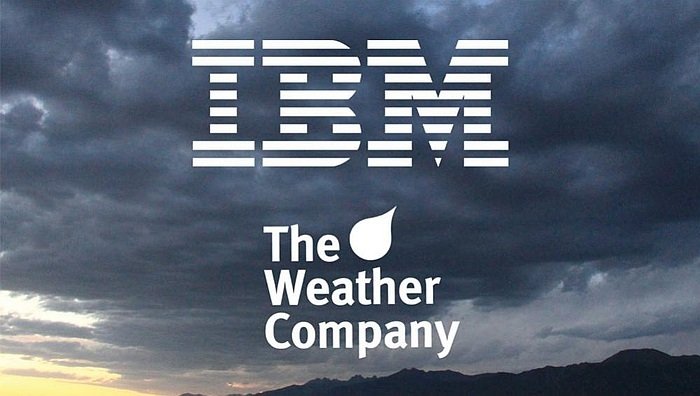For small-scale farmers, every drop of rain counts. Unlike large farms with access to irrigation networks and heavy machinery, most smallholders rely heavily on natural weather patterns to plan their planting, watering, and harvesting.
But what happens when the rains come late? Or when an unexpected storm destroys weeks of work?
This is where AI-powered weather forecasting tools come in.
Artificial intelligence (AI) is transforming how small-scale farmers around the world track weather conditions. By providing hyperlocal, accurate forecasts, AI weather apps help farmers make better decisions, reduce crop loss, and increase productivity—even on plots as small as one acre.
In this guide, we explore how these apps work, why they’re essential for micro-farming, and the best AI weather tools that are accessible, affordable, and effective for small-scale farmers.
The Problem: Traditional Forecasts Aren’t Enough
Weather forecasts on TV or the radio are often too broad. They may tell you the general forecast for your region, but they don’t account for the microclimates that many small farms depend on.
Small changes in elevation, soil type, or proximity to water can affect rainfall, temperature, and humidity at the local level. These small differences can make or break your growing season.
That’s why AI weather apps—which analyse satellite data, historical weather trends, real-time sensor input, and machine learning models—are now the go-to tools for precision micro-farming.
Benefits of AI Weather Forecasting for Small Farms
| Benefit | How It Helps Small Farmers |
|---|---|
| Hyperlocal Forecasts | Get weather predictions tailored to your exact farm location—not just your region. |
| Predictive Alerts | Receive early warnings for rainfall, frost, drought, and wind. |
| Data-Driven Decisions | Know when to plant, water, harvest, or apply fertiliser. |
| Resource Savings | Avoid wasting water, seeds, or labour due to bad timing. |
| Improved Yields | Timing your farming activities with the weather improves crop health and harvests. |
How AI Weather Apps Work
AI weather forecasting tools use machine learning algorithms to study patterns in:
- Satellite and radar imagery
- Historical weather records
- IoT sensor data (like soil moisture or temperature)
- Crowd-sourced observations
They then deliver forecasts that are more location-specific and reliable than traditional meteorology services.
Some tools even offer voice or SMS alerts, making them accessible to farmers with basic mobile phones or limited internet.
Top AI Weather Apps for Small Farmers in 2025
Below are some of the most useful AI weather forecasting tools currently available to smallholders. We evaluate them based on accuracy, ease of use, offline capability, language support, and affordability.
1. Tomorrow.io (Formerly ClimaCell)

🌦️ Overview:
Tomorrow.io uses AI to provide hyperlocal weather forecasts down to your GPS location. It integrates satellite, sensor, and mobile data to generate real-time, predictive weather maps.
✅ Key Features:
- Hyperlocal forecasts (even in rural areas)
- Custom alerts for rain, wind, humidity, and soil dryness
- Crop-specific decision support
- Works on mobile (Android & iOS)
💰 Cost: Free basic plan; premium plans available
📍 Best For:
Smallholder farmers in developing regions who need real-time alerts and mobile weather planning.
🌾 Use Case:
A Ugandan maize farmer uses Tomorrow.io to avoid planting ahead of a 3-day drought, saving on water and replanting costs.
2. IBM Weather Channel App (with Watson AI)

🌦️ Overview:
IBM’s Watson AI powers The Weather Channel app, delivering extremely accurate forecasts backed by global data and machine learning.
✅ Key Features:
- 15-day forecasts with high detail
- Real-time storm tracking and AI-predicted rainfall
- Supports multiple languages
- Location tagging for rural farms
💰 Cost: Free with ads; premium version removes ads and gives extended forecasts
📍 Best For:
Farmers in regions with reliable internet access looking for long-term planning forecasts.
🌾 Use Case:
A Filipino banana grower uses Watson’s 15-day trend to time irrigation and manage disease risks from prolonged humidity.
3. PlantVillage Nuru Weather (by Penn State University)

🌦️ Overview:
This app is part of the PlantVillage suite, designed specifically for smallholder farmers in Africa. Its weather tool combines AI forecasting with crop health alerts and offline capabilities.
✅ Key Features:
- AI-generated 7-day forecast for any village
- Crop-specific weather alerts
- Local language support (e.g., Swahili, Hausa, Igbo)
- Works offline once downloaded
💰 Cost: Free
📍 Best For:
African smallholders looking for simple, localised, offline weather advice.
🌾 Use Case:
In Nigeria, a cassava farmer uses Nuru to avoid weeding on stormy days, cutting unnecessary labour.
4. Agrio

🌦️ Overview:
Agrio is an AI-based decision support platform that offers weather-based disease and pest predictions. It’s perfect for farmers growing sensitive crops like tomatoes, potatoes, or cucurbits.
✅ Key Features:
- Weather-based alerts for disease outbreaks
- AI forecast maps and risk levels
- Visual disease diagnosis
- Integration with drones and sensors
💰 Cost: Free plan available; premium for detailed alerts
📍 Best For:
Organic farmers or those dealing with high-value crops vulnerable to weather-related diseases.
🌾 Use Case:
A tomato grower in Spain receives an early blight alert via Agrio after a sudden humidity rise, applying bio-controls just in time.
5. WeFarm (SMS-Based, Africa-Focused)

🌦️ Overview:
WeFarm is a peer-to-peer SMS platform that also includes AI-generated weather forecasts and crop tips, designed for farmers without internet.
✅ Key Features:
- Works entirely via SMS—no smartphone needed
- Sends daily weather updates and rain alerts
- AI curates peer advice for weather response
💰 Cost: Free; SMS charges may apply
📍 Best For:
Remote farmers without smartphones or internet access.
🌾 Use Case:
A Tanzanian bean farmer receives an SMS advising to harvest early due to incoming rain, avoiding post-harvest rot.
How to Choose the Right AI Weather App for Your Farm
Here are the five main questions to consider:
- What kind of phone do you use?
- Smartphone: Try Tomorrow.io or PlantVillage
- Feature phone: Try WeFarm
- Is internet connectivity reliable in your area?
- Yes: Use apps with rich visuals like Agrio
- No: Use offline-capable apps like Nuru or SMS-based tools
- What crops do you grow?
- Disease-prone crops? Choose weather + disease forecast tools.
- Water-sensitive crops? Prioritise irrigation alerts.
- Do you need long-term forecasts?
- For crop planning, use apps offering 15-day or monthly trends.
- Language needs?
- PlantVillage and WeFarm support local languages.
Real-World Impact: Small Farmers Share Their Stories
📍 India – Rice Farming
Raju, a 2-acre rice farmer in Odisha, used to lose up to 20% of his yield due to bad timing of transplanting. After adopting Tomorrow.io, he receives alerts when rainfall exceeds 20mm. “Now, I transplant only after checking the app. My yield went up 30% last season.”
📍 Kenya – Vegetable Farming
Mercy, a vegetable farmer, relies on PlantVillage’s weather tool to know when to irrigate. “It tells me if the soil will stay wet or dry based on forecasted temperature. I saved 40% of my water last year.”
📍 Nigeria – Cassava Production
WeFarm helps 500 smallholders in Kaduna receive SMS forecasts daily. “Even our elders without smartphones check their messages before they go to the farm,” says community leader Yusuf.
Integrating AI Weather with Other Tools
AI weather tools are most powerful when used alongside other smart farming apps, such as:
- Disease diagnosis apps (like Plantix)
- Smart irrigation systems (like NetBeat or Arable)
- AI chatbots for advice (like Digital Green)
For example, you might use:
- Tomorrow.io to decide when to water
- Plantix to check for leaf diseases after rain
- A WhatsApp chatbot to confirm fertiliser timing
This synergy can boost small farm resilience even further.
Tips for Getting Started with AI Weather Tools
- Download two or three apps and compare their forecasts.
- Set up alerts for rainfall, wind, or frost.
- Use GPS or manually enter your farm coordinates for accurate results.
- Train your team or neighbours—share your knowledge.
- Keep a journal of weather predictions vs. actual conditions to build trust in the tool.
Conclusion: Turn the Weather from a Threat Into an Asset
AI weather apps empower small-scale farmers to take control of the one thing they’ve always had to leave to chance: the weather.
By choosing the right AI tool, you can:
- Plant at the right time
- Water only when needed
- Protect crops from storms and diseases
- Maximise your yield with confidence
Whether you farm one acre or five, the rain no longer has to surprise you.
✅ Take Action Now
📱 Download one AI weather app today
🧑🌾 Ask your cooperative to run a training session
📬 Subscribe to Smarter Yields for more AI tool guides
🔗 Next in the Series: Your Pocket Agronomist: Best AI Apps to Diagnose Crop Diseases →


